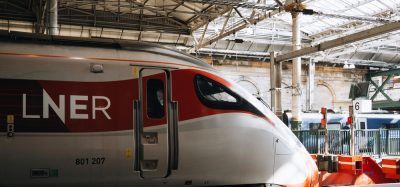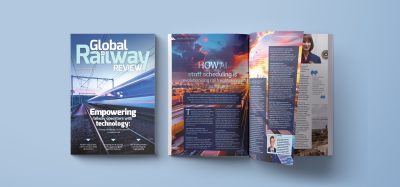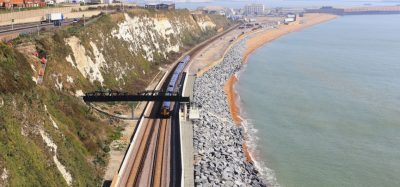What does the McNulty Rail Value for Money Study mean for Europe’s railways?
Posted: 22 September 2011 | | No comments yet
The Rail Value for Money Study commissioned in 2010 by Britain’s then Transport Secretary, Lord Adonis, and the Office of Rail Regulation, and continued by the Coalition government, Transport Secretary, Philip Hammond, was published in its final form in May 2011. It is to be followed by a government White Paper in late-2011, but in the meantime, accompanied by industry and media discussion of the Study’s recommendations – groundwork for implementation continues.
The primary conclusion, based on a top-down exercise and comparative benchmarking with railways in France, the Netherlands, Switzerland and Sweden, is that Britain’s railway should cost up to 40% less than it does and that cost savings of 30% should be achievable by 2018/2019. This would mean industry costs in that year of £8.5 billion (€9.77 billion) rather than the current £12 billion (€13.788 billion).
Study Terms of Reference
The Study’s Terms of Reference included the following:
1. To examine the overall cost structure of all elements of the railway sector and to identify options for improving value for money to passengers and the taxpayer while continuing to expand capacity as necessary and drive up passenger satisfaction.
2. In particular, to examine:
- What legal, operational and cultural barriers stand in the way of efficiency improvements
- The incentives across different parts of the rail industry to generate greater efficiency
- The role of new technology, processes and working practices in fostering greater efficiency
- Ways of generating more revenue, e.g. car parking, gating at stations, better utilisation of property
- To make recommendations.
3. The Study will examine the whole-industry costs and revenues and their composition. In doing so, it will look at comparable industries in the UK and abroad.
It should be noted that there was no expectation of fundamental reform of the industry structure and the Study recommendations assume that substantial improvements in value and cost can be achieved without such reform. The Transport Secretary has said that he does not intend to introduce legislation. The Terms of Reference stress that capacity should continue to grow (as necessary) and the Study did not examine possible cuts in the network.
These are important points to grasp. The Study effectively endorses the existing structure and should give confidence to other countries (such as France) who may be contemplating liberalisation, that the British model need not cost more than its European counterparts.
There are useful pointers in the Study which need to be taken on board by other countries who venture to break up a state railway as part of a radical restructuring of the industry and these are highlighted later in this article.
The British model has proved very successful in encouraging investment and growing the market. Since the completion of privatisation in 1996:
- Passenger numbers, which had declined before privatisation, have increased by 57% and have continued to grow through the banking crisis and its aftermath
- The structure has encouraged continuing investment in new rolling stock and improved infrastructure and facilities
- Punctuality and reliability of passenger services has steadily improved along with overall passenger satisfaction
- The rail freight industry has expanded, improved productivity, invested heavily and achieved significant cost reductions
- There has been continuous improvement in safety.
The Study provides insights which are relevant not only in Britain but to other railways particularly as they liberalise, as to how the public and private sector organisations which have to work together to deliver rail transport in Europe, need to behave if the railway is to remain efficient, maintain and increase capacity and deliver value for money.
Privatisation of Britain’s railway
Between 1994 and 1996, the Conservative government implemented an ambitious plan, separating infrastructure from train operations beyond the requirements of EU legislation and establishing an independent rail regulator. The infrastructure manager, Railtrack, was opened up to private capital by listing on the London Stock Exchange and passenger services were split into 25 franchises (statutorily defined operating concessions) of varying lengths of mainly 7 up to 15, years for which private sector bidders competed. Three rolling stock leasing companies (ROSCOS) were set up to own and lease the existing and new passenger stock and sold outright, as were the principal freight businesses. Virtually all the remaining businesses such as track main – tenance, track renewal, IT systems and the tele – communications network were also sold.
This was done at a time when passenger and freight use had been declining for some years and the government had re-launched a motorway building programme using private finance. Britain had not benefited from major investment in replacing or upgrade of its Victorian railways that World War II necessitated in Germany and France.
Subsequent reform
There have been significant structural changes since the privatisation. The first resulted from the collapse of Railtrack in 2001 after the Hatfield derailment in October 2000. It was put into administration by the Blair government and was replaced by Network Rail, a not for dividend private company. Network Rail, which benefits from a government related credit rating and has no shareholders to satisfy, is subject to the same independent regulatory regime designed for Railtrack. The original franchising agency and its successor, the Strategic Rail Authority, were dismantled and control of franchising and strategy was moved directly into the Department for Transport in 2005.
Rail safety was added to the functions of the Rail Regulator’s Office in 2005 in an attempt to reduce the cost of the safety regime. A critical change in the Railways Act 2005 gave government, rather than the regulator, control over the funding of Network Rail. Government now sets out in advance of each regulatory review, the funding available (SOFA) and the high level output specification (HLOS) which Network Rail is to deliver. The Department for Transport has also become proactive in the procurement of new rolling stock using public private partnership and whole life cost techniques rather than leasing. This effectively ended the virtual monopoly of the ROSCOS who were also subjected to a rigorous competition review. Franchised operation remains a key part of private sector involvement in the industry and the Coalition government has changed franchising policy to open the way for longer, less highly specified franchises capable of taking more business risk with the objective of encouraging private sector financing and innovation and reducing subsidy.
Most of these reforms were aimed at increasing efficiency and reducing cost. However, the McNulty Study still found the principle barriers to efficiency to be: ‘fragmentation of structures and interfaces, the ways in which the roles of Government and industry have evolved, ineffective and misaligned incentives, a franchising system that does not encourage cost reduction sufficiently, management approaches that fall short of best-practice in a number of areas that are key cost drivers, and a railway culture which is not conductive to the partnership and continuous improvement approaches required for effective cost reduction.’
It is recognised that many of these barriers are different sides of the same problem.
Business-led approach of the Study Team
Sir Roy McNulty, a former Chairman of the Civil Aviation Authority (a regulatory body) and an accountant by training, and his Study team have taken a business-led approach to their analysis, concluding that passenger unit costs are too high. Their argument is that in normal course, unit costs would have been expected to fall in the 15 years since privatisation, given a 57% increase in passenger numbers over that period. This has not happened. After peaking in 2003 to 2004, unit costs of 20p per passenger kilometre in 2009/2010 were, on an adjusted basis, at approximately the same level as in 1996/1997 – the first year of operation in the private sector.
Rail fares in Britain are the highest in Europe and it remains government policy for passengers to pay an increasing proportion of railway costs, but the Study concludes that fares are already too high.
McNulty recommendations
There are many detailed recommendations. The purpose of this article is not to look at these in detail but they can be found in the Study and the underlying research1. The recommendations are grouped under the following three main headings:
- Creating an enabling environment
- Delivering greater efficiencies
- Driving implementation.
Changes to create an enabling environment
There is much stress on leadership and clear policy. The Study has attempted to focus government on setting the overall direction of policy and objectives and the funding, leading to a position where the industry then has a real role and responsibility for strategic planning and delivery in line with government policies and objectives, with an emphasis on cost reduction. A Rail Delivery Group of senior industry people has been set up to lead a programme of change, including dialogue with the Trade Unions. The Transport Secretary is expected to give a lead on some critical issues. Government policy should be clearer and the HLOS and SOFA should have specific cost objectives and more long-term planning. There should be more stress on managing the existing capacity and a greater understanding of what subsidy is used for and how this fits with government objectives. Government and Network Rail should devolve decision-making and there should be a bigger role for local and regional government.
An interesting recommendation is the closer realignment of route level infrastructure management between Network Rail and train operators through a range of cost and revenue sharing, alliances and forms of vertical integration.
Incentives should be more effective, the main examples being the changes in franchising policy to incentivise operators to reduce costs and to cooperate more effectively with Network Rail. Network Rail, as a result of the different ways of operating outlined above, will be in a better position to understand its own costs and with better management incentives enabled to move to unsupported debt and private invest – ment. A single regulator, the existing Office of Rail Regulation, rather than the current system where operators are primarily answerable to the Transport Department and Network Rail to the Regulator, is recommended. Fares policy should be reviewed and simplified with a view to fairer arrangements combined with the possibility of managing demand and greater use of technology, such as smartcards.
Changes which deliver greater efficiencies and the major savings
Modern techniques of management of assets, supply chain, programme and projects are needed with earlier involvement of contractors and suppliers and less volatility in workload.
A new Rail Systems Agency will lead on standards management and innovation.
Modernisation of staffing and working practices and pay restraint at all levels is required, coupled with improved training. There needs to be better management of information systems. Rolling stock should be more standardised with better procurement and strategic partnerships with ROSCOS (and, more controversially) ways found of reducing the cost of the less intensively used parts of regional railways.
Effective approach to driving implementation
The Study contains a high level implementation plan. Its proposal for a change programme management team working closely with the industry leadership group and reporting to the Transport Secretary seems not to have been accepted.
Relevance to other railways
It would be an understandable reaction to the Study to see the British model as expensive and unsuitable for adoption elsewhere. This would overlook the success story of consistently rising demand and much improved services. There are more subtle lessons which are of wide application. The first is about the role of government once there is no longer a large monopolistic state railway interposed between it and the travelling public and freight and logistics industry. The UK government does not seek detailed involvement in the operation of other privatised and fragmented utilities such as the energy industry, but these other utilities have not required continuing tax payer subsidy.
A great deal of the inflexibility which has led to excessive cost has resulted from the provisions of the franchise agreements which have tended to cement current industry costs at each franchising round. Government has taken the risk of increases in access changes, and has also paid a substantial proportion by way of direct grant to Network Rail. This has disassociated train operators from controlling the cost of infrastructure access, the largest component of their costs.
Restrictive concepts of force majeure which exclude industrial action have not incentivised the Infrastructure Manager or the franchised train operators (in contrast to rail freight) to modernise staffing and working practices.
A framework, such as that under the English and Scottish governments, set the funding and sufficiently high level specification for both infrastructure and passenger train services which is then administered and monitored by a strong independent regulator, is a necessary part of preventing micro management by politicians and civil servants.
Network Rail has shown that, within the regulatory regime, it can deliver marked service improvements and make cost savings in its operations and maintenance functions but renewals and enhancements remain expensive. There have already been significant moves to introduce changed working practices so that the railway can be kept open while works are carried out. Most railways would benefit from culture change leading to mod – ernisa tion in asset, supply chain, project and programme management and a revised safety and standards approach should help to reduce the cost of operations as well as new and improved infrastructure.
Governments would be encouraged to stand back and focus on setting clear policy and understanding what tax payer subsidy buys, if they see industry leadership which is commercially incentivised. The legal and regulatory framework should enable the industry to deliver what the passenger market wants to buy rather than what civil servants specify. Until now, franchise terms dictated by UK government have been very complex and detailed and with restricted scope for savings in core costs. Longer and less prescriptive agreements with less government support will drive train operators to respond to the market, to cease to expect ‘predict and provide’ assistance from government and to cut their cost base.
Closer working arrangements between the infrastructure manager and train operators will help to breakdown the artificial divide, to some extent a product of the European legislation, between the focus on infrastructure and train operation as separate businesses with separate revenue streams and customers, rather than a single industry.
The detailed analysis and research produced by the McNulty Study provides other railways with pertinent guidance as they move to liberalise, seeking to achieve the successes which the British model has delivered and delivering value for money.
Reference
About the Author
Mary Bonar FCILT is rail adviser to international law firm Stephenson Harwood and a member of its rail team. She Chairs the Light Rapid Transit Forum. Mary works on the strategy, funding, regulation and contracts for heavy and light-rail projects and operations.
Stay Connected with Global Railway Review — Subscribe for Free!
Get exclusive access to the latest rail industry insights from Global Railway Review — all tailored to your interests.
✅ Expert-Led Webinars – Gain insights from global industry leaders
✅ Weekly News & Reports – Rail project updates, thought leadership, and exclusive interviews
✅ Partner Innovations – Discover cutting-edge rail technologies
✅ Print/Digital Magazine – Enjoy two in-depth issues per year, packed with expert content
Choose the updates that matter most to you. Sign up now to stay informed, inspired, and connected — all for free!
Thank you for being part of our community. Let’s keep shaping the future of rail together!








